This summary is based upon a six part investigation which provides a detailed breakdown of the evidence supporting the findings highlighted here. You can check the evidence by reading that series:
Part 1 : – Introduction to the EXPOSE Network and its Hub, the Open Information Partnership (OIP).
Part 2 : – Examining the role of the EXPOSE network and authenticating the supporting evidence.
Part 3 : – Looking at the Network Facilitator for the EXPOSE Network established by the Zinc Consortium.
Part 4 : – Research into the EXPOSE Network partners and the web of globalist institutions behind them.
Part 5 : – Continuing to look at the EXPOSE Network partners and the web of globalist institutions behind them.
Part 6 : – The global funding streams and parallel international initiatives placing the EXPOSE Network inside a larger multinational operation.
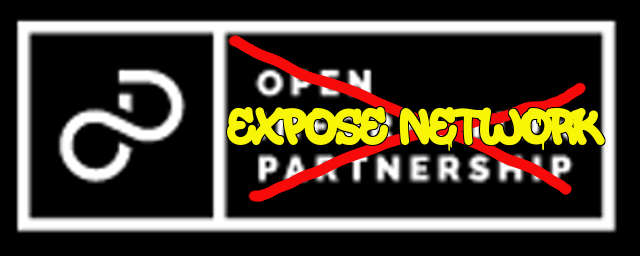
The EXPOSE Network & The Open Information Partnership
The EXPOSE Network (the name suggested by the FCO) is a project of the Counter Disinformation & Media Development Program (CDMD), currently headed by Andy Pryce. The likely contracting authority is the Secretary of State for Foreign and Commonwealth Affairs (then Foreign Secretary Jeremy Hunt). It is a £10 million tax payer funded 3 year project that was planned to run between Summer 2018 to 2021.
The Open Information Partnership (OIP) is the Network Hub of the UK Government Foreign and Commonwealth Office’s (FCO) EXPOSE network. It is a one part of a wider UK/EU/NATO strategic communication and data gathering operation.
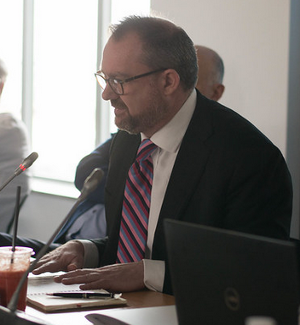
We can rule out any idea the EXPOSE Network is genuinely concerned with combating manipulated information, as claimed by the OIP. At no stage, throughout its development, has any emphasis been placed upon investigation or the analysis of evidence. The attempts at uncovering genuine disinformation, which undoubtedly exists, have been distorted and exaggerated to such an extent, the findings are practically meaningless.
The Network Facilitator of EXPOSE is a consortium led by Zinc Networks who were formerly known as Breakthrough Media. The projects resource partners are Bellingcat, DFR Labs and the Media Diversity Institute. The implementing consortium partners are the Institute of Statecraft and Aktis Strategy (no longer operating) with risk management and security almost certainly provided by Toro Risk Solutions. Grant fund management is probably handled by Ecorys.
Both the EXPOSE network’s and the larger EU/NATO strategic communications (STRATCOM) operations are closely tied to globalist think tanks and multinational corporations. Its purpose is to promote EU/NATO policy objectives and undermine all who question them; it targets mainly European nations, especially in Eastern Europe and the Balkans but also others in Central Eurasia, almost certainly with a view to expanding towards North & Central Africa and the Middle East.
Its purpose is to control the flow of information, ensuring that public awareness is restricted only to official state narratives, in support of NATO/EU policy. In Part 1 we explore the social and political implications of the EXPOSE Network’s propaganda.
The EXPOSE Network Revelations
Leaked documents reveal the purpose and scope of what we can call the EXPOSE Network, its facilitator (Zinc consortium) and its hub (the Open Information Partnership.) These documents are authenticated in Part 2 of the series. Following the leaks, a number of reports emerged. Many were from Russian state media outlets such as RT and Sputnik with others such as George Galloway and 21st Century Wire also drawing attention to the leaked documents.
We cannot be certain about the official name of this operation, or if it even has one. The only verifiable name is that given to the public facing element of its hub, the Open Information Partnership. However, as we shall see, the ‘counter disinformation’ network proposed by the Zinc led consortium is active. The capabilities they offered the FCO in their technical proposal are deployed across Europe today. In the absence of any better term, we can refer to this project as the EXPOSE Network. This was the original name suggested by the FCO.
It has been claimed that the planned EXPOSE Network hasn’t reached fruition. The evidence revealed in this series of articles will show that it is currently operating at the heart of the European Union’s ‘Action Plan Against Disinformation’. The threat it poses to democracy, freedom of speech & expression and the people’s ability to openly and freely share information cannot be overstated.
It is clear that everything which challenges western state narratives is considered Kremlin disinformation. At no stage are the EXPOSE partners asked to consider the evidence substantiating this assertion. It is simply stated as fact.

Everyone who questions the policies, announcements and actions of EU/NATO aligned states are identified, by the EXPOSE network, as either willing or unwitting agents, assets, trolls or bots of the Kremlin. This includes, but isn’t necessarily limited to, whoever the state decides is a far right or a far left group (no definition); people they consider anti-Zionists (no definition); anyone they label a conspiracy theorist (no definition); people who don’t hate the Russian’s, or “Kremlin sympathisers” as the FCO put it, (no definition); those who criticise the mainstream media (which appears to be just about everybody), fringe networks (no definition) and, even worse, fringe networks who share content using mainstream hashtags, resulting in unwanted information “bleeding into the mainstream.” Twitter users basically.
Following the leak on 25th March 2019, on the 3rd April 2019, in response to a parliamentary question asked by SNP MP Stephen Gethins, then Minister of State and member of the parliamentary Intelligence and Defence Committee Alan Duncan, stated:
“We have a regular dialogue with international partners on the challenge posed by hostile state disinformation, including to align donor support in this field. The Foreign Secretary (then Jeremy Hunt) discussed disinformation at the EU Foreign Affairs Council on 21 January in the context of the European Commission’s ambitious Action Plan Against Disinformation. The Foreign and Commonwealth Office’s own dedicated Counter Disinformation and Media Development Programme aims to protect national security by countering disinformation directed at the UK and its Allies from Russia. It funds projects in a number of different countries that seek to enhance independent media, support civil society organisations that expose disinformation and share good practice with partner governments. Media plurality, institutional resilience and public awareness provide strong defences against disinformation, whatever the source, and sit at the heart of our efforts. In particular, we are supporting a new Open Information Partnership of European Non-Governmental Organisations, charities, academics, think-tanks and journalists which are working to respond to manipulated information in the news, social media and across the public space.”
An undated draft proposal from the Foreign and Commonwealth Office (FCO) stated that the network (subsequently called EXPOSE) is a project of the CDMD program headed by Andy Pryce. It is inconceivable that he didn’t at least authorise this draft. The proposed contract creates the role of a Network Facilitator to run the Network Hub of the EXPOSE network.
On 23rd May 2019, a promotional article for the OIP by Deborah Haynes, a named journalist in the UK cluster of the Integrity Initiative, confirms the details of a leaked draft of a £10 million contract over three years, with an anticipated roll out in the summer of 2018. The successful contractor is asked to ‘assume’ independence.
In light of the level of direct CDMD control built into the leaked contract, this ‘assumption’ appears to be little more than coded language for maintaining plausible deniability. It also identifies the EXPOSE Network as a priority for the CDMD.
Andy Pryce apparently attended a workshop discussing a network of NGO’s on Wednesday 8th of August 2018 where he gave feedback on the terms of the contract. Zinc Network submitted their consortium bid to the FCO in a technical proposal dated 31st August 2018. So it seems likely that interested parties gathered to discuss the creation of the EXPOSE Network around late July to early August 2018.
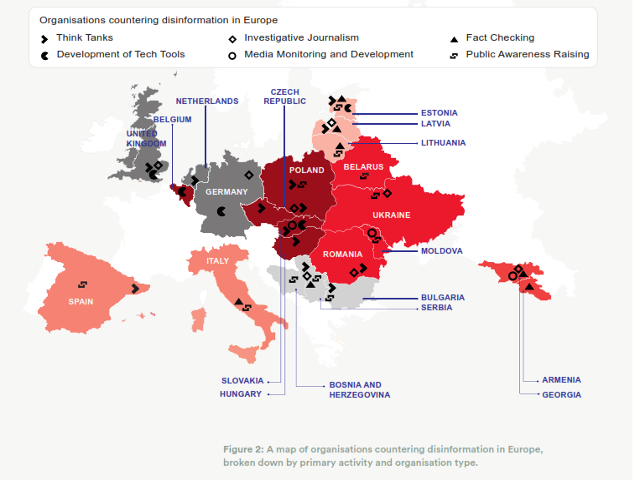
EXPOSE Network Takes Shape
In Part 3 we assess the role of the EXPOSE Network Facilitator, operated out of anonymous offices in London by the Zinc led consortium (ZC). They demonstrate a number of capabilities including their skill at targeting individuals and intervening in election processes.
In June 2018, the CDMD issued their final scoping report for the the proposed EXPOSE Network. It established the role of a Network Facilitator to act as the central coordinator for the web of civil society organisations (CSO), non governmental organisations (NGO), fact checkers, smaller civil activists groups, journalists and bloggers across Europe and parts of Central Eurasia. The Network Facilitator would operate out of the Network Hub from where they could provide the technical & legal support, cyber & physical security, funding and training for the ‘network of actors.’
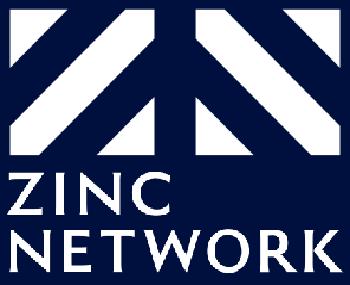 The Network Facilitator contract was won by a consortium led by Zinc Network. They submitted their technical proposal on or after the 31st August 2019. We can be reasonably certain this convinced the FCO to offer the Zinc consortium the contract. As with most contract bids, the FCO CDMD would have been interested to see what ‘added value’ Zinc could offer them. We cannot be sure which elements of that added value the CDMD, who maintain close control of the EXPOSE Network, chose to adopt. We can be more confident about the elements the Zinc consortium are contractually obliged to deliver. These were specified in the scoping document and broadly outlined in the draft proposal.
The Network Facilitator contract was won by a consortium led by Zinc Network. They submitted their technical proposal on or after the 31st August 2019. We can be reasonably certain this convinced the FCO to offer the Zinc consortium the contract. As with most contract bids, the FCO CDMD would have been interested to see what ‘added value’ Zinc could offer them. We cannot be sure which elements of that added value the CDMD, who maintain close control of the EXPOSE Network, chose to adopt. We can be more confident about the elements the Zinc consortium are contractually obliged to deliver. These were specified in the scoping document and broadly outlined in the draft proposal.
The Network Hub is the Open Information Partnership, currently represented by nothing more than single page website. The webpage is essentially a ruse (disinformation) to sell the idea that the OIP is a public, open and transparent organisation. It meets the FCO’s request that the operation be ‘overt’ and no attempt be made to hide it. Like their suggestion that the Network Facilitator ‘assume’ autonomy, this looks like an attempt by the FCO to maintain “plausible deniability”. Noting this desire, ZC addressed this in their technical proposal:
“To be sustainable and less vulnerable to attack from malign actors, the Network needs to be public-facing…… the strategy for public facing communications is based on minimum requirements, such as a static website……..The project could expand to build on this public facing component, promoting the network as a journalist integrity and disinformation network……Although the activities of specific Network Members will remain discrete, The Hub will be public facing, openly presenting itself as a project that brings together actors with a variety of expertise and interests in promoting media integrity across Europe. The positioning of the project in the broader media development and integrity sector is essential to help mitigate reputational risks both to the FCO and to safeguard the interests of Network Members.
There is little doubt about the clandestine nature and precarious morality of the EXPOSE Network, openly addressed in numerous documents and evidenced by their present activity. In a bid to win the contract, ZC gave assurances to the FCO that their reputation would be protected:
“We will underpin activities with a robust risk management framework which takes as paramount the safeguarding of Network Members and other stakeholders as well as the potential reputational risks to the client (the FCO CDMD).”
[Note: Bracketed information added.]
EXPOSE Networks Rapid Response
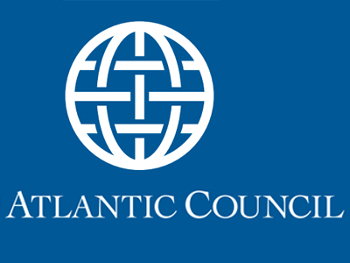
Via their resource partners (Zinc Network, DFRLab, the Media Diversity Institute, Bellingcat) the EXPOSE Network is a network of networks drawing resources from governments, non governmental organisations, global corporations, wealthy philanthropic trusts, the international banking community, NATO and the EU. We look at the evidence substantiating this in Part 4 and Part 5. Key supporting donor partners include the National Endowment for Democracy, the Atlantic Council, The Open Society Foundation, USAID, NATO, the EU, Google, Facebook and Twitter among many others.
Advocating their Rapid Response vehicle the ZC offer the Counter Disinformation and Media Development Program the following service:
“….by coordinating members’ (network of actors) activities and resource to respond to pertinent anniversaries or events, such as the annexation of Crimea or local elections, or at flashpoints of disinformation. The Network Managers would coordinate this activity in their clusters accordingly, yet informed by a centralised strategy under the direction of the Project Director who will work closely with the FCO…….Our proposal already integrates a rapid response mechanism, facilitating a crisis response team comprised of technical experts with legal, security and communications expertise to support organisations at critical moments.”
[Note: Bracketed information added.]
Speaking in June 2018, following the G7 summit, then UK Prime Minister Theresa May announced the G7’s Rapid Response Mechanism. The G7 stated that hostile state activity will be met with a rapid and unified response. Alleged hostile states will be identified for their ‘egregious behaviour’ and there will be swift, coordinated international attribution of guilt for cyber and other attacks.
Effectively they were declaring that foreign states will be blamed immediately for any event the G7 claims they are guilty of. No evidence or investigation required. Just arbitrary ascription of blame and rapid retribution. Apparently, this dangerous lunacy is part of the laboriously advocated ‘international rules based system.’ It appears to differ somewhat from International Law which focuses more upon concepts shunned by the G7, such as due process and evidence.
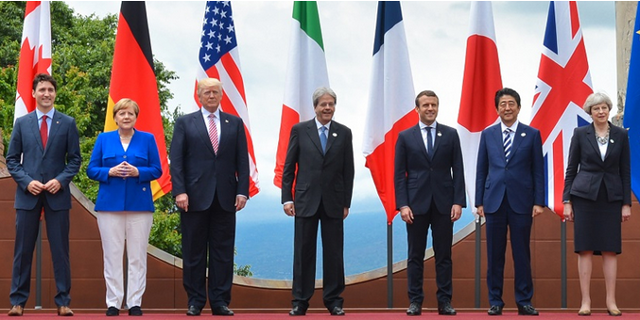
It is now possible to envisage how the Rapid Response Mechanism will work from the public’s perspective. The G7 will blame another country for some event or crisis. Currently this looks most likely to be Russia, Iran or China, but it could be any nation that falls into the G7’s cross-hairs. Yemen maybe? Blame will be attributed without any investigation or need of proof. Evidence is irrelevant.
This will be accompanied by a slew of ‘counter disinformation’ content pumped out by the EXPOSE Network. They will also rapidly identify anyone who questions the G7’s assertion. The ‘counter disinformation’, accurate or otherwise, will support the G7 narrative without question.
Using the raft of Internet ‘safety’ legislation currently being rolled out, EXPOSE Network ‘supporters’ like Google, Facebook, Twitter and others, can then be directed towards shared information contradicting the G7’s assertions and purge the offending accounts. Along with all information, including any evidence, they direct the public towards. The Internet, as we know it, is increasingly being controlled. Access to information will be limited by the state and their corporate partners.
EU Evidence of the Threat Level
There were some other notable components of Alan Duncans announcement of the Open Information Partnership. He stated:
“We have a regular dialogue with international partners on the challenge posed by hostile state disinformation…….The Foreign Secretary discussed disinformation at the EU Foreign Affairs Council on 21 January in the context of the European Commission’s ambitious Action Plan Against Disinformation”
The EXPOSE Network sits within “the context of the European Commission’s ambitious Action Plan Against Disinformation.” Duncan’s statement alone is far from the only reason to believe this the case.
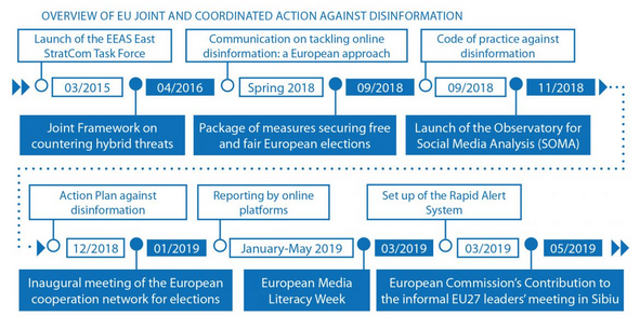
The EU Action Plan Against Disinformation, spells out the evidence it has based a planned €123 billion investment upon. This investment is to enhance the capabilities of the European External Action Service (EEAS) with a particular focus upon SRATCOM capability. This evidence is provided by the EEAS team called the East StratCom Task Force (ESTF). The EU state:
“The East Strategic Communications Task Force, has catalogued, analysed and put the spotlight on over 4,500 examples of disinformation by the Russian Federation, uncovering numerous disinformation narratives….”
The Easta StratCom Task Force’ (ESTF) main method for countering disinformation is ‘raising awareness’ about it via their weekly Disinformation Review. The full record of the Task Force’s work on disinformation is available on the ESTF’s own EUvsDisinfo website.
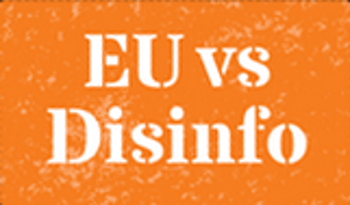
The work of EUvsDisinfo is central to the EU Action Plan. It provides the evidence which informs the EU’s assessment of the Russian disinformation threat. The influential U.S. think tank and policy advisors, the German Marshall Fund, wrote a policy paper in August 2019. They observed:
“EU vs Disinfo’s research and documentation efforts were instrumental in changing the debate about Russian disinformation and hybrid threats within the European Parliament and EU institutions.”
The full record of the 4,500 examples of disinformation, rather than emanating from academic or intelligence based assessments, are the sum of EUvsDisinfo’s Open Source Intelligence (OSINT) informed ‘weekly reviews.’
In Part 6 we examine this claimed evidence. Time and time again, when you check the links alleging Russian disinformation, proof either doesn’t exist or is spuriously contrived from entirely subjective interpretations of mainly MSM content. Hard evidence, proving the scale of this fabled Russian disinformation operation, doesn’t exist.
In March 2018 the ESFT were forced to issue a retraction after three Dutch media outlets threatened to sue them for falsely labeling them as ‘disinformation.’ The ESFT acknowledged the Dutch were right and claimed they were “taking steps to further improve.”
In fact, the ESFT don’t seem to have much faith in their own investigations. Carefully adding a disclaimer to every ‘Disproof’ stating:
“This does not necessarily imply, however, that a given outlet is linked to the Kremlin or editorially pro-Kremlin, or that it has intentionally sought to disinform.”
Posing the question, if it implies the story is neither linked to the Kremlin nor that it is pro-Kremlin and it doesn’t intentionally seek to ‘disinform’, how can it possibly be ‘Kremlin disinformation’?
As with the EXPOSE Network, it seems the EU’s assertion, regarding the scale of Russian disinformation and the level of threat it presents, is fallacious. It is as if they are reading from the same script.
EXPOSE Network Provide the Evidence
We know that one of the EXPOSE Networks recommended ‘fact checkers’ is the Ukrainian based StopFake. They report:
“Britain is thought to be leading [the] EU in building a grassroots campaign against Russia’s attempts [disinformation]. The campaign is lead by the Foreign and Commonwealth Office and executed by a communications agency called Zinc Network.”
[Note: Bracketed information added]
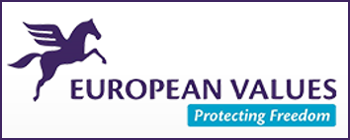
Certainly when we look at the EXPOSE Networks ‘actors’, that appears to be the case. Of these, perhaps one of the most influential is the European Values Center for Security Policy. Through them we can see how the transatlantic NATO/EU EXPOSE Network operates. Their two biggest funders are the Dutch government and the UK Foreign and Commonwealth Office.
One of European Values’ projects is Kremlin Watch, which claims to tell you “everything you need to know about about Russian influence operations in Europe.” They also tell us quite a bit about the role of the EXPOSE Network in Europe. They state:
“Our team is the most active contributor to the EEAS East STRATCOM network (ESFT), which produces the Disinformation Review.”
[Note: Bracketed information added]
It seems the EXPOSE Network is providing the Kremlin disinformation analysis, via the East StratCom Task Force, which the European Union are using to justify draconian Internet regulations and planned tax expenditure of €123 billion over five years. The quality of that analysis appears to be so poor we might consider if it is itself ‘disinformation.’ The Action Plan builds upon the work of the ESTF, which is the work of the EXPOSE Network.
The EXPOSE Network is an operation of the Counter Disinformation and Media Development Program of the UK Government Foreign and Commonwealth Office (FCO). This suggests the UK Government are working with the European Union to create a €123 billion tax payer funded budget, based upon their own highly questionable Kremlin disinformation analysis. A healthy return on an initial £10 million investment. What really matters is that the tax paying public believe the threat is real.
As long as they do they will accept the imposition of restricted online freedoms and won’t resist the NATO/EU joint policy to control all information. The EXPOSE Network’s resources are not limited to official budgets and direct political oversight is limited. It partners with a huge network of global interests each seeking, both individually and collectively, to benefit from the EXPOSE Network’s capacity to influence NATO and EU policy. It is at the heart of the European Union’s STRATCOM strategy and uses manipulated information to mislead, misdirect and misinform both policy makers and public alike.
Its existence is anti democratic and its activities demonstrate total disregard for the principles citizens in western democracies hold dear. If it is all it claims to be then it should not fear scrutiny. It should be as open and transparent as it promises on its single page website and genuinely engage with the public’s questions, born from the critical thinking it allegedly venerates.
It is an immense threat to free speech and freedom of expression. Each an every one of us needs to exercise our rights, and demand the EXPOSE Network account for itself.
Well?

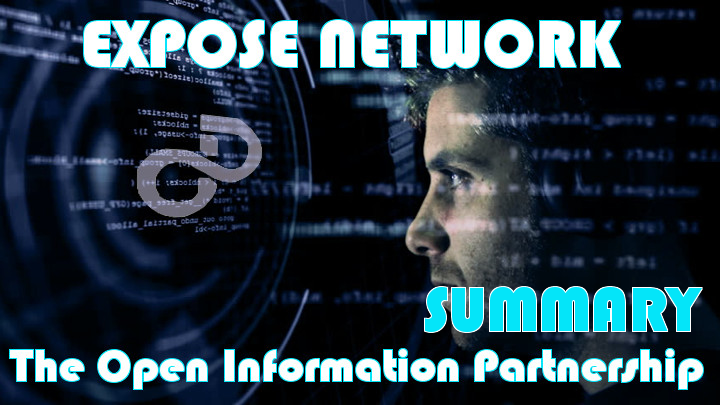

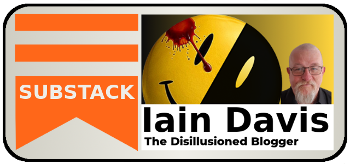


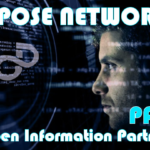
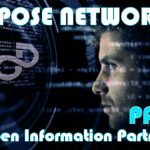

Be the first to comment on "EXPOSE Network and the Open Information Partnership – Summary"